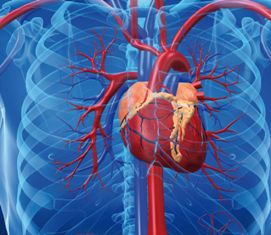Aortic pressure better for diagnosing congestive heart failure and coronary heart disease
5 January 2012
Prof. Uwe Nixdorff from the European Prevention Centre, Düsseldorf is advising cardiologists to combine intima media thickness (IMT) measurement with Aloka’s ultrasound scanner pulse wave intensity function to check for unseen coronary heart disease.
“This technique is currently seldom used," he said, "however, in my experience it provides a more complete picture and enables me to treat patients earlier for life-threatening conditions that are often missed using conventional approaches”
Aloka is collaborating with Prof. Nixdorff to advocate cardiologists worldwide begin using new functionalities for earlier diagnosis of coronary heart disease — enabling a preventative rather than a reactionary approach to this pandemic disease.

The problem with exclusively using older conventional techniques, like checking a patient’s blood pressure, is that it only enables the clinician to see what is happening externally and does not necessarily expose dangerous pre-clinical risk factors acting on the heart itself.
However, by combining IMT (intima media thickness) — the thickness of the arterial walls — with pulse wave intensity, which is the level of stress felt by the heart muscle (diastolic and systolic left ventricular function), and how this translates to blood flow behaviour, the clinician will be able to get a simultaneous overview of both the heart’s functional and physical properties for the first time. This provides an invaluable insight into the early stages of heart failure and preclinical artery disease, enabling appropriate treatment to start more quickly, potentially saving lives.
For example, if the patient has the early stages of atherosclerosis (hardened and narrower arteries) it forces the myocardium muscle (heart muscle) to work increasingly hard, building it up (left ventricular hypertrophy) and resulting in increased pressure on the heart walls when ejecting blood (afterload). Over time the heart’s increased muscle mass will also cause difficulty re-filling during the diastole stage (diastolic relaxation dysfunction) and these factors collectively will result in systemic or pulmonary hypertension, and ultimately heart failure.
Aloka’s e-flow technology provides a new blood flow imaging mode which permits high spatial and temporal resolution. Combined with e-tracking technology, ALOKA’s unique analytical system, this facilitates the cardiologist in simultaneous access to vital information on the previously unforeseen aortic pressure — an early warning sign of possible CHD.
Prof. Nixdorff, added: “The ability to provide a complete pathophysiological perspective of atherosclerosis as a systemic process is unique to Aloka systems, and it enables for a comprehensive understanding of the entire ventriculoarterial function.
"The crucial difference with e-tracking is that it’s so accurate that it can even detect sub-clinical levels of vascular disease, making it ideal for earlier diagnosis and screening programmes. If we are able to see disease before it has taken hold of patients we can quickly move to an appropriate drug regimen — like ace inhibitors or AT-II receptor antagonists — and prevent unnecessary deaths from this pandemic disease”.
The only current impendent to widespread adoption of these newer more accurate predictive techniques is appropriate training, and in order to eliminate ‘user dependence’ Prof. Nixdorff and Aloka are running training initiatives around the globe and at major conferences throughout the year.
Prof. Nixdorf presented his findings and experiences at this year’s EuroEcho in December (7-10), 2011.
Source: Aloka